Mankind has frequently created catastrophes that devastate the
environment and taken lives. The 10 worst man-made disasters of all time
are difficult to determine with so many blunders. However, excluding
the loss of life resulting from war, terrorism or transportation
disaster, this list includes the incidents that have had the most affect
on people and the environment.
1. London’s Killer Fog
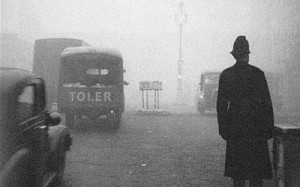
With the advent of industry, London’s population was accustomed to seeing foggy, pollution laden air. In 1952 however, this pollution took a tragic turn. This winter, the weather was cold and residents burned more coal in their fireplaces to alleviate the chill. The smoke laced with sulfur dioxide, nitrogen oxides and soot, and left London encased in a black cloud of near total darkness and killed over 12,000 people.
2. The Al-Mishraq Fire
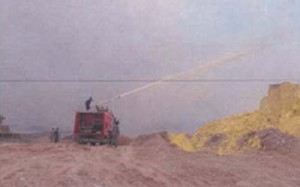
Another of the 10 worst man-made disasters of all time was the Al-Mishraq fire on June 24, 2003. This fire at an Iraqi sulfur plant burned for about a month releasing sulfur dioxide into the atmosphere. Sulfur dioxide can kill people by causing respiratory problems and also creates acid rain which destroys crops.
3. The Nuclear Power Plant Explosion in Chernobyl, Russia
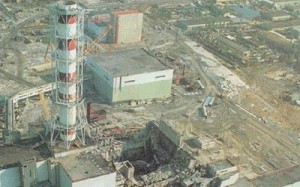
On April 26th 1986, the Chernobyl Plant in the Ukrainian Soviet Socialist Republic had a major meltdown which resulted in the atmospheric release of radioactive material four hundred times more radioactive than Hiroshima. Since the accident there have been countless children with birth defects, a sickening increase of cancer sufferers and many other health issues as well. It is estimated that the disaster could result in nearly 100,000 fatal cancers, and the area won’t be safe for any activity, including farming for up to 200 years.
4. The Kuwait Oil Fires
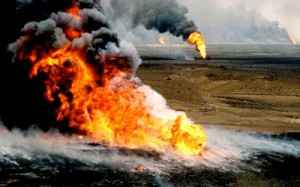
The Gulf War oil spill is the largest oil spill in history making it one of the 10 worst man-made disasters of all time. In 1991, following the invasion of Kuwait, Hussein sent men in to blow up the Kuwait oil wells. They managed to set over 600 ablaze and these burned for over seven months. The oil spill that resulted from the fires caused considerable environmental damage.
5. The Destruction of the Aral Sea
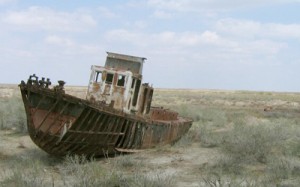
The Aral Sea was one of the four largest lakes at one point in time. However, in the 1960’s, the Soviet Union diverted the waters from the rivers that fed the lake to irrigation projects. The sea has now shrunk by 90 percent and the salt and sandstorms that the devastation created kill plant life and have negative consequences for hundreds of miles around.
6. The Exxon Valdez Oil Spill
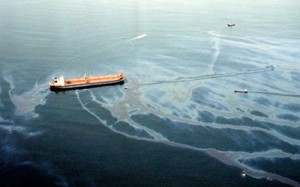
On March 24, 1989, the American oil tanker the Exxon Valdez collided with the Bligh Reef. This created an oil spill with far reaching consequences in the Prince William Sound in Alaska. Over 11 million gallons of oil spilled over nearly 500 miles polluting the coastline. Over a quarter million birds were killed and countless other wildlife. Over 11,000 people aided in the clean up process.
7. Dioxin Pollution
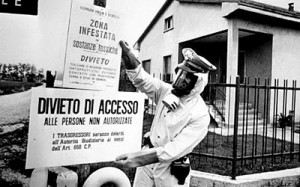
On July 10, 1976 in Meda, Italy, a reactor in the ICMESA chemical company exploded. This led to a toxic cloud of dioxin being released into the atmosphere. Dioxin is one of the most toxic chemicals known to man. While no one died as a direct result of the accident, many children were affected by the serious skin disease chloracne from the accident.
8. The Love Canal
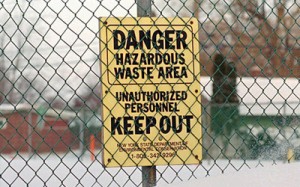
In the 1940’s a strange smell enveloped the area around the Love Canal near Niagara Falls. Residents also began to notice an odd seepage leaking into their yards and people began to fall ill. In addition, many women began to have miscarriages and give birth to babies with birth defects. Upon inspection, it was discovered that there was over 21,000 tons of toxic industrial waste buried below the surface of the town by a local company.
9. The Union Carbide Gas Leak
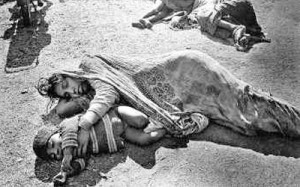
On the night of December 2, 1984, the Union Carbide pesticide plant in Bhopal, India began to leak methyl isocyanate gas and other poisonous toxins into the atmosphere. Over 500,000 were exposed and there were up to 15,000 deaths at that time. In addition, more than 20,000 people have died since the accident from gas-related diseases.
10. The Three Mile Island Nuclear Explosion
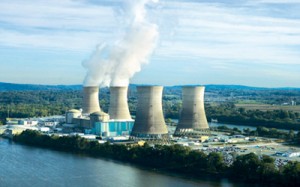
In Harrisburg, PA on March 28, 1979, the Three Mile Island nuclear reactor experienced a partial core meltdown. While little radiation was released from the accident thanks to a working containment system, this accident became the rallying call for fears about the nuclear power industry. Livestock deaths, premature deaths and birth defects have been attributed to the nuclear melt-down.
Man can have a devastating effect on the environment and the 10 worst man-made disasters of all time have had a negative effect on the environment for decades afterwards. Frequently these disasters are related to poor industrial oversight within developing countries. However, even with regulation a catastrophe can strike.
1. London’s Killer Fog

With the advent of industry, London’s population was accustomed to seeing foggy, pollution laden air. In 1952 however, this pollution took a tragic turn. This winter, the weather was cold and residents burned more coal in their fireplaces to alleviate the chill. The smoke laced with sulfur dioxide, nitrogen oxides and soot, and left London encased in a black cloud of near total darkness and killed over 12,000 people.
2. The Al-Mishraq Fire

Another of the 10 worst man-made disasters of all time was the Al-Mishraq fire on June 24, 2003. This fire at an Iraqi sulfur plant burned for about a month releasing sulfur dioxide into the atmosphere. Sulfur dioxide can kill people by causing respiratory problems and also creates acid rain which destroys crops.
3. The Nuclear Power Plant Explosion in Chernobyl, Russia

On April 26th 1986, the Chernobyl Plant in the Ukrainian Soviet Socialist Republic had a major meltdown which resulted in the atmospheric release of radioactive material four hundred times more radioactive than Hiroshima. Since the accident there have been countless children with birth defects, a sickening increase of cancer sufferers and many other health issues as well. It is estimated that the disaster could result in nearly 100,000 fatal cancers, and the area won’t be safe for any activity, including farming for up to 200 years.
4. The Kuwait Oil Fires

The Gulf War oil spill is the largest oil spill in history making it one of the 10 worst man-made disasters of all time. In 1991, following the invasion of Kuwait, Hussein sent men in to blow up the Kuwait oil wells. They managed to set over 600 ablaze and these burned for over seven months. The oil spill that resulted from the fires caused considerable environmental damage.
5. The Destruction of the Aral Sea

The Aral Sea was one of the four largest lakes at one point in time. However, in the 1960’s, the Soviet Union diverted the waters from the rivers that fed the lake to irrigation projects. The sea has now shrunk by 90 percent and the salt and sandstorms that the devastation created kill plant life and have negative consequences for hundreds of miles around.
6. The Exxon Valdez Oil Spill

On March 24, 1989, the American oil tanker the Exxon Valdez collided with the Bligh Reef. This created an oil spill with far reaching consequences in the Prince William Sound in Alaska. Over 11 million gallons of oil spilled over nearly 500 miles polluting the coastline. Over a quarter million birds were killed and countless other wildlife. Over 11,000 people aided in the clean up process.
7. Dioxin Pollution

On July 10, 1976 in Meda, Italy, a reactor in the ICMESA chemical company exploded. This led to a toxic cloud of dioxin being released into the atmosphere. Dioxin is one of the most toxic chemicals known to man. While no one died as a direct result of the accident, many children were affected by the serious skin disease chloracne from the accident.
8. The Love Canal

In the 1940’s a strange smell enveloped the area around the Love Canal near Niagara Falls. Residents also began to notice an odd seepage leaking into their yards and people began to fall ill. In addition, many women began to have miscarriages and give birth to babies with birth defects. Upon inspection, it was discovered that there was over 21,000 tons of toxic industrial waste buried below the surface of the town by a local company.
9. The Union Carbide Gas Leak

On the night of December 2, 1984, the Union Carbide pesticide plant in Bhopal, India began to leak methyl isocyanate gas and other poisonous toxins into the atmosphere. Over 500,000 were exposed and there were up to 15,000 deaths at that time. In addition, more than 20,000 people have died since the accident from gas-related diseases.
10. The Three Mile Island Nuclear Explosion

In Harrisburg, PA on March 28, 1979, the Three Mile Island nuclear reactor experienced a partial core meltdown. While little radiation was released from the accident thanks to a working containment system, this accident became the rallying call for fears about the nuclear power industry. Livestock deaths, premature deaths and birth defects have been attributed to the nuclear melt-down.
Man can have a devastating effect on the environment and the 10 worst man-made disasters of all time have had a negative effect on the environment for decades afterwards. Frequently these disasters are related to poor industrial oversight within developing countries. However, even with regulation a catastrophe can strike.
No comments:
Post a Comment